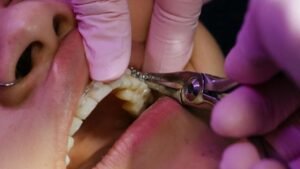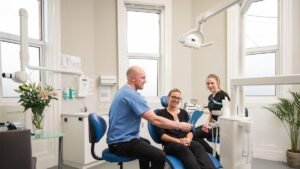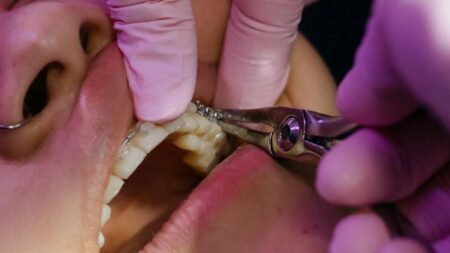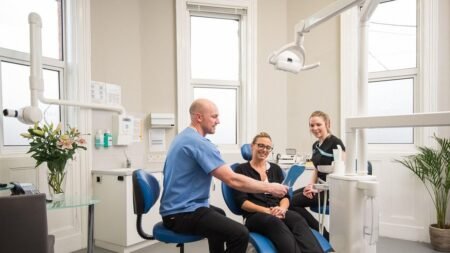Did you know that oral cancer screening is twice as likely to occur in men? Risk factors include HPV infection, tobacco use, and regular alcohol consumption. With an estimated 54,540 new diagnoses of oral cancer expected in 2023, it’s crucial to understand the importance of early detection and the costs associated with oral cancer screenings.
Regular oral cancer screenings are recommended for adults of all ages. This is especially true for those with risk factors like tobacco or alcohol use, family history of oral cancer, or previous oral cancer diagnoses. The cost of an enhanced oral cancer screening typically ranges from $25 to $50 at Aspen Dental offices.
But, many factors can affect the price. These include geographical location, dental office policies, insurance coverage, type of screening performed, and the need for follow-up tests.
While the cost of oral cancer screening may seem like an added expense, it’s essential to prioritize your health and well-being. Early detection through regular screenings can significantly improve survival rates and lead to easier treatment options. In this article, we’ll explore the various factors that influence oral cancer screening costs. We’ll also provide you with the information you need to make informed decisions about your oral health.
Key Takeaways
- Oral cancer screening is more common in men, with risk factors including HPV infection, tobacco use, and alcohol consumption.
- Regular screenings are recommended for all adults, especially those with higher risk factors.
- Enhanced oral cancer screening costs typically range from $25 to $50 at Aspen Dental offices.
- Early detection through regular screenings can improve survival rates and treatment options.
- Factors affecting screening costs include location, dental office policies, insurance coverage, type of screening, and follow-up tests.
The Importance of Early Detection
Early detection is key to beating oral cancer. Finding the disease early means better treatment options and higher survival chances. Regular check-ups help spot problems early, stopping them from getting worse.
Improved Survival Rates
Early detection greatly boosts survival rates. Catching oral cancer early can lead to a 80-90% five-year survival rate. But if it’s caught later, the rate drops to 50-60%. Early detection means better treatment and a higher chance of beating the disease.
| Stage at Diagnosis | 5-Year Survival Rate |
|---|---|
| Early Stage (Stage I and II) | 80-90% |
| Advanced Stage (Stage III and IV) | 50-60% |

Easier Treatment Options
Early detection means less invasive treatments. Often, surgery or radiation therapy can be used. These treatments are less harsh and have fewer side effects than treatments for later stages.
Early detection of oral cancer can make a life-saving difference. It allows for prompt intervention and increases the likelihood of successful treatment outcomes.
Early detection also:
- Reduces the risk of cancer spreading
- Lessens the need for major surgeries
- Improves life quality after treatment
By knowing how crucial early detection is, you can take steps to protect your health. Regular screenings during dental visits can help catch oral cancer early.
Factors Affecting Oral Cancer Screening Cost
The cost of oral cancer screenings can change based on several things. Knowing these can help you plan for the cost and make smart choices about your oral health care.
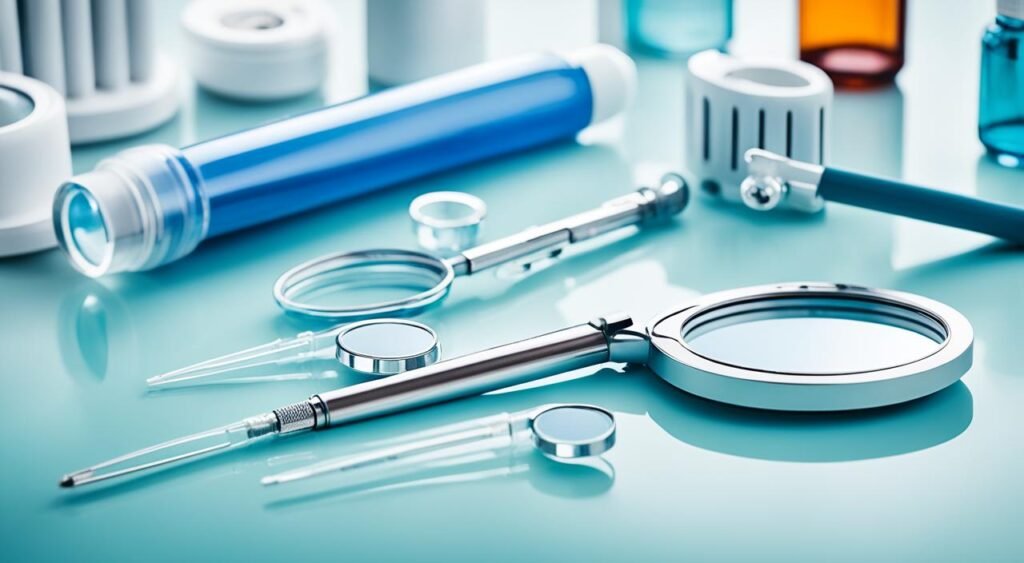
Geographical Location
Where you live can change how much you pay for oral cancer screening. Healthcare costs and living expenses differ across regions, affecting dental service prices, including screenings. For instance, screenings might be pricier in big cities than in rural areas.
Dental Office Policies
Dental offices have their own rules on oral cancer screenings. Some dentists offer the screening during a regular check-up for free. Others might charge extra. Always ask your dental office about their policy to know the total cost of your screening.
| Dental Office Policy | Cost Impact |
|---|---|
| Included in regular check-up | No additional cost |
| Charged as a separate fee | Increased overall cost |
Type of Screening Performed
The cost can also depend on the type of screening. A basic visual check is usually cheaper than more detailed screenings. Tests like using dyes or lights to spot suspicious areas might cost more.
Need for Follow-up Tests
If your dentist finds something unusual, they might suggest more tests. These tests, like biopsies, can increase the total cost. The cost will vary based on the tests needed and your insurance.
Recent studies show you might pay extra if more lab tests are needed to check for abnormal cells after screening.
Understanding what affects the cost of oral cancer screenings helps you manage the expenses better. Talk to your dentist or insurance company about any concerns or questions. This way, you can get the care you need without worrying about costs.
Insurance Coverage for Oral Cancer Screenings
Insurance coverage for oral cancer screenings varies with your dental plan. Many plans cover these screenings as part of preventive care. This is because early detection can improve survival rates and treatment outcomes.
The Affordable Care Act (ACA) makes private insurers and Medicare cover certain cancer screening tests. State laws also ensure that private insurance, Medicaid, and employee health plans pay for regular screenings. Self-insured plans governed by the ACA often cover these tests with no cost for the screening itself.
Close to 53,000 Americans will be diagnosed with oral or oropharyngeal cancer this year, and approximately $3.2 billion was spent in the United States in 2010 to treat head and neck cancers.
Here’s a breakdown of how some major insurance providers cover oral cancer screenings:
| Insurance Provider | Coverage for Oral Cancer Screenings |
|---|---|
| Anthem, Blue Cross of ID, BCBS of Western NY, BCBS of OK, Independent Health | 100% coverage with no deductible |
| Cigna, United Health Care | 75-100% coverage, depending on the plan |
| BCBS of MI | No coverage for oral cancer screenings |
Out-of-pocket costs can vary with your health insurance plan and what it covers. If you’re unsure, contact your insurance to understand your coverage for oral cancer screenings and any costs you might face.
Investing in preventive care, like regular oral cancer screenings, can lead to earlier detection. This means more effective treatments and can save you money and stress later on.
What to Expect During an Oral Cancer Screening
When you visit your dentist for an oral cancer screening, they will check your mouth and throat for cancer signs. They use a visual and physical exam, and sometimes, they might do more tests.
Visual Examination
Your dentist will look at your mouth’s lining with a light, mirror, and tongue depressor. They’re searching for any oddities, such as:
- Red or white patches
- Sores that don’t heal
- Lumps or thickening of tissue
- Asymmetry in the oral cavity
Physical Examination
Your dentist will also do a physical check. They’ll feel your mouth’s tissues for lumps. They’ll also check your throat and neck for swelling or lumps in the lymph nodes. These could mean cancer has spread.
“Early detection is key in the successful treatment of oral cancer. Regular oral cancer screenings can help identify any potential issues before they become more serious.” – Dr. John Smith, DDS
Additional Diagnostic Tests
Sometimes, your dentist might suggest more tests to check suspicious spots. These tests could be:
| Test | Description |
|---|---|
| Brush biopsy | A small brush is used to collect cells from a suspicious area for laboratory analysis. |
| Toluidine blue staining | A special blue dye is applied to the mouth, which can help highlight abnormal cells. |
| Fluorescence staining | A special light is used to illuminate abnormal cells that may not be visible during a regular examination. |
Regular oral cancer screenings can protect your health. Knowing the signs of oral cancer helps catch problems early. If you see anything odd in your mouth, see your dentist right away.
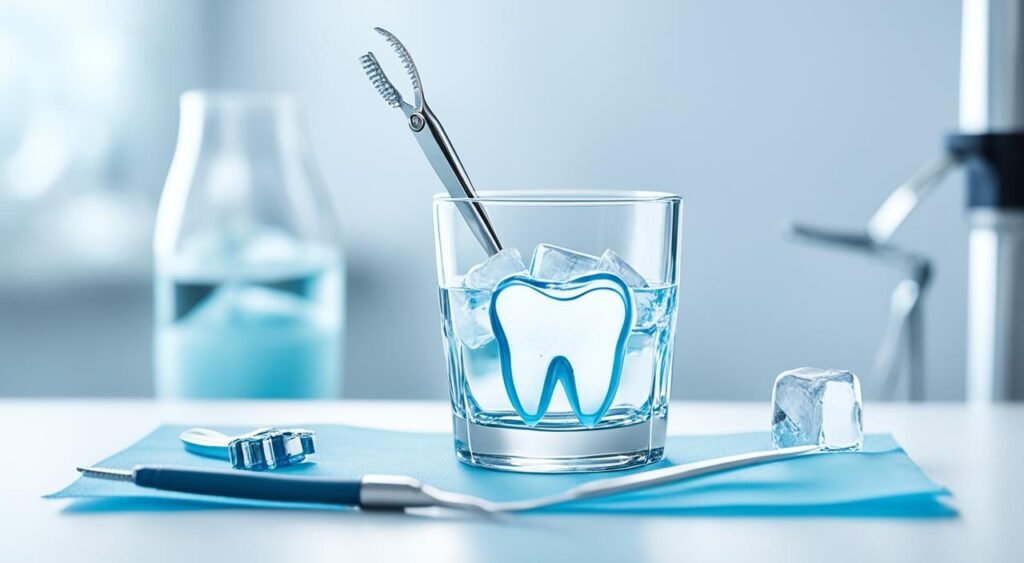
Oral Cancer Screening Cost
Regular oral cancer screenings are key for catching cancer early and treating it effectively. The cost varies based on several factors. Knowing the average cost and insurance options helps you make better dental care choices.
Average Cost Range
Oral cancer screenings cost between $10 and $100, with most falling in the $15 to $35 range. This is often part of a full dental check-up. But, advanced methods like fluorescent tech or OralID can cost more.
Cost with Insurance
If you have dental insurance, your screening might be covered. Many plans include it for early detection. Always check with your provider to know your benefits and any costs you might face.
Cost without Insurance
Without insurance, you’ll pay for the screening yourself. Though it may seem expensive, it’s crucial for your health. Many offices offer payment plans or discounts for those paying out-of-pocket.
| Screening Type | Average Cost |
|---|---|
| Basic Oral Cancer Screening | $15 – $35 |
| Enhanced Oral Cancer Screening (VELscope) | $30 – $50 |
| Advanced Screening with OralID | $50 – $100 |
If a screening finds something suspicious, you might need more tests, like a biopsy. These tests can add to the cost. But catching cancer early and treating it quickly can greatly improve your health and outcomes.
Conclusion
Oral cancer screenings are key to finding oral cancer early and treating it successfully. They help catch more oral cancers at an early stage (42% vs. 24% in the control group). This can greatly improve survival rates and treatment success. Plus, these screenings cost less than US$ 6 per person, making them affordable for many.
Screening high-risk groups is the most cost-effective way. It costs just US$ 156 per life-year saved for those at high risk, like smokers and heavy drinkers. Focusing on these groups helps use resources better and boosts early detection benefits.
Talking to your dentist or healthcare provider about oral cancer screening is crucial. They can explain your risk factors, the screening process, and any costs. Many insurance plans cover these screenings, making them easier to get. There are also programs or clinics offering low-cost or free screenings for those without insurance.
Oral cancer screening is vital for your oral health and overall health. Knowing how early detection works, its cost-effectiveness, and the affordable options available helps you take steps to lower your risk. Don’t wait to talk to your dentist about adding oral cancer screenings to your dental check-ups.
FAQ
How much does an oral cancer screening typically cost?
Oral cancer screenings usually cost between $15 and $35. They are often part of a regular dental check-up.
Does insurance cover oral cancer screenings?
Yes, most dental insurance plans cover oral cancer screenings as part of preventive care. But, coverage can change based on your plan and risk factors for oral cancer.
What factors can affect the cost of an oral cancer screening?
The cost can change due to geographical location, dental office policies, insurance, screening type, and follow-up tests needed.
Why is early detection of oral cancer important?
Catching oral cancer early is key because it boosts survival rates and makes treatment easier. Early detection means treating it before it spreads.
What happens during an oral cancer screening?
The dentist checks your mouth and throat for signs like bumps, color changes, ulcers, and swelling. They use a light, mirror, and tongue depressor for a visual check and a physical exam for lumps or other issues.
What if I don’t have dental insurance? How much will an oral cancer screening cost?
Without dental insurance, you’ll pay the full cost of the screening, which is usually $15 to $35. Still, it’s a good investment in your health.
Are there any additional costs associated with oral cancer screenings?
If the dentist finds something unusual, you might need more tests like a biopsy. These extra tests and procedures can increase the total cost.
